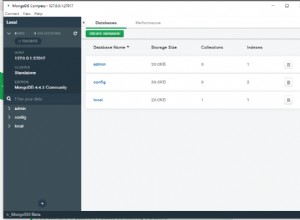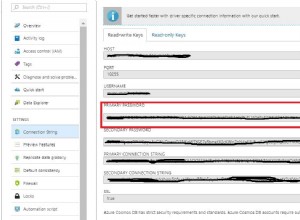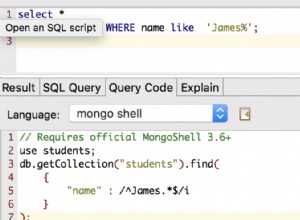map funkcja
dotyczy tablic, więc założę, że Twoje products klucz w twoim przykładzie jest tablicą, a nie obiektem.
Po pierwsze, sugeruję prawidłowe napisanie definicji typu odpowiedzi na produkty, jeśli jeszcze tego nie zrobiłeś
interface IProduct {
_id: string,
category: number,
gender: number,
title: string,
description: string,
price: number,
imageFileName: string,
createdAt: string,
updatedAt: string,
__v: number
}
interface IResponse {
_id: string;
products: IProduct[];
}
Następnie, aby uzyskać Pick praca nad jednym product obiekt, możesz zindeksować IResponse interfejs za pomocą indeksowanych typów dostępu
. Chcesz products właściwość w index ponieważ jest to tablica.
/*
Indexed Access Types
type Person = { age: number, name: string }[];
type Age = Person[number]["age"];
*/
type Products = ReadonlyArray<
Pick<
IResponse["products"][number],
"_id" | "gender" | "title" | "description" | "price" | "imageFileName"
>
>;
Gdybyś miał zrobić coś takiego jak Pick<IResponse["products"], '_id'...> próbowałbyś użyć Pick aby wyodrębnić właściwości z tablicy, co spowodowałoby błąd.
Pozostaje tylko zmapować produkty od odpowiedzi do pożądanego kształtu obiektu.
// Query your products
const { products }: IResponse = {
_id: "611e2febb863ce74ac448220",
products: [
{
_id: "6116a9ecc3e98d500c5e523d",
category: 5,
gender: 1,
title: 'sivdosi',
description: 'oisbdvoi',
price: 2394,
imageFileName: 'http://localhost:3000/images/1628875244435-3564.png',
createdAt: "2021-08-13T17:20:44.472Z",
updatedAt: "2021-08-13T17:20:44.472Z",
__v: 0
}
]
}
// Get the desired object
const pickedProducts: Products = products.map(({ _id, gender, title, description, price, imageFileName }) => ({
_id,
gender,
title,
description,
price,
imageFileName
}));
Ostateczny wynik wygląda mniej więcej tak, jak poniżej
interface IProduct {
_id: string,
category: number,
gender: number,
title: string,
description: string,
price: number,
imageFileName: string,
createdAt: string,
updatedAt: string,
__v: number
}
interface IResponse {
_id: string;
products: IProduct[];
}
type Products = ReadonlyArray<
Pick<
IResponse["products"][number],
"_id" | "gender" | "title" | "description" | "price" | "imageFileName"
>
>;
// Query your products
const { products }: IResponse = {
_id: "611e2febb863ce74ac448220",
products: [
{
_id: "6116a9ecc3e98d500c5e523d",
category: 5,
gender: 1,
title: 'sivdosi',
description: 'oisbdvoi',
price: 2394,
imageFileName: 'http://localhost:3000/images/1628875244435-3564.png',
createdAt: "2021-08-13T17:20:44.472Z",
updatedAt: "2021-08-13T17:20:44.472Z",
__v: 0
}
]
}
// Get the desired object
const pickedProducts: Products = products.map(({ _id, gender, title, description, price, imageFileName }) => ({
_id,
gender,
title,
description,
price,
imageFileName
}));




